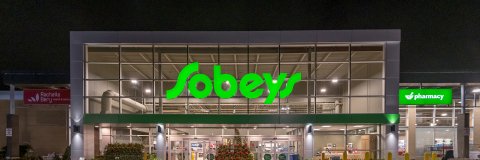Net-zero by 2040 with validated science-based targets *
*for Scope 1 and 2 emissions, and net-zero for Scope 3 emissions by 2050
As climate change has adverse impacts on our planet, including increasing the risk of extreme weather and other potential disruptions, we are taking action to reduce our GHG emissions and to make our business more resilient.
Our Approach
Climate change is one of the top priorities in our materiality assessment. Stakeholders have indicated they are interested in the steps we are taking to prepare for, adapt to and mitigate climate-related risks. Our aim is to cut our greenhouse gas (GHG) emissions to improve and optimize our operating performance while still delivering great customer experiences.
Our Climate Action Plan is aimed at reducing our GHG emissions and our transition towards decarbonizing our business and value chain. It demonstrates how doing OurPartTM is a priority for our entire business.
Climate Action Plan: Phase 1 Progress
Our Climate Action Plan has many facets. One of the main focus areas is reducing emissions from refrigeration and improving energy efficiency. Refrigeration retrofits remain the most efficient means of reducing emissions with the added benefit of addressing any outstanding maintenance and energy efficiency issues. Achieving our objectives in those areas, coupled with grid decarbonization, will allow us to realize the majority of GHG emissions needed to reach our 2030 reduction target. In the past year, we gained meaningful insight into our carbon footprint with a carbon abatement forecast update, leading to better decision making and allowing us to streamline our efforts.
In year two of our Climate Action Plan: Phase 1, which runs from fiscal 2024 to fiscal 2026, we continued our focus on reducing Scope 1 and 2 emissions associated with refrigeration in our stores and warehouses. In total, we have invested approximately $91 million in more than 655 carbon-reduction projects across more than 155 company sites. As a result of these investments, we have achieved a total Scope 1 and 2 emissions reduction of 30% against our 2019 baseline emissions.
Our Targets |
Net-Zero Targets:
|
Near-Term Science-Based Targets (validated):
|
Setting FLAG Targets for Scope 3
To comply with the Science Based Targets initiative (SBTi) guidance, we are required to establish specific targets for GHG emissions related to the forestry, land and agriculture (FLAG) sector. As a company that procures products and services, our FLAG targets must cover at least 67% of FLAG-related Scope 3 emissions. We are assessing potential FLAG-related targets for Scope 3, Category 1–purchased goods and services. We are collaborating with suppliers to collect the information required for FLAG emissions calculations. As not all our suppliers are at the same level of maturity on their climate journeys, we are taking a thoughtful approach to advance consistency and collaboration.
Empire and Sobeys Inc. Greenhouse Gas Emissions
| Scope | 2024 | 2023 | 2022 | 2019 | % difference (2024-2023) |
% difference (2024-2019) |
|---|---|---|---|---|---|---|
|
Scope 1 |
2024
314,387 |
2023
338,089 |
2022
340,790 |
2019
396,300 |
% difference
(2024-2023) -7% |
% difference
(2024-2019) -20.7% |
|
Scope 2 |
2024
212,245 |
2023
217,073 |
2022
232,360 |
2019
357,030 |
% difference
(2024-2023) -2.2% |
% difference
(2024-2019) -40.6% |
|
Scope 3 |
2024
15,233,336 |
2023
18,279,106 |
2022
17,414,110 |
2019
18,478,700 |
% difference
(2024-2023) -16.7 % |
% difference
(2024-2019) -17.6% |
|
Total Scope 1, 2 |
2024
526,632 |
2023
555,162 |
2022
573,150 |
2019
753,330 |
% difference
(2024-2023) -5.1% |
% difference
(2024-2019) -30.1% |
|
Scope 1 & 2 Intensity (kg CO2e/sq ft) |
2024
21.8 |
2023
23.2 |
2022
23.9 |
2019
32.8 |
% difference
(2024-2023) -6.2% |
% difference
(2024-2019) -33.6% |
Note:
- We use the GHG Protocol to calculate our emissions. The 2019-2024 GHG inventory includes all Sobeys Inc. and Empire grocery and related business banners in operation since 2019, including corporate and franchise sites.
- Scope 1 emissions sources encompass natural gas, propane and fuel oil used for heating and operations in our stores, retail support centres and offices, as well as refrigerant emissions, fuel from corporate and Voilà fleet and diesel in onsite generators.
- Scope 1 emissions from refrigerant leakage include our corporate grocery sites where maintenance service providers are integrated with our maintenance-tracking and data-management system. We are continuously refining our data-collection processes.
- Scope 2 emissions sources encompass electricity consumption.
- Scope 3 emissions sources encompass purchased goods and services, capital goods, fuel and energy-related activities (not included in Scope 1 or 2), upstream transportation and distribution, waste generated in operations, business travel, employee commuting, down- stream transportation and distribution, use of sold products, franchises, and investment.
Scope 1, 2 and 3 GHG Emissions Trends and Performance Against Targets
We annually evaluate our methodology for collecting and assessing GHG emissions data, continuously improving our accuracy, transparency and consistency, then planning future actions for improvement.
As our emissions summary table shows, we continue to make progress reducing GHG emissions thanks to investments in energy efficiency and work with our suppliers. Scope 1 and 2 emissions are almost 30% lower compared to our 2019 base year, primarily due to reductions in Scope 2 emissions.
Scope 1 & 2 Emissions
Key Factors Driving Reductions:
- Refrigeration: Emissions from refrigeration leaks declined by 12.7% YoY on account of conversion and retrofit projects delivered as part of our Climate Action plan. Through these projects, we are transitioning our refrigeration systems to refrigerants with lower global warming potential, leading to lower leak-related emissions.
- Energy Efficiency: Improved energy consumption (electricity and natural gas) in retail locations in most provinces due to energy efficiency projects and optimization of corporate site areas. Overall, the majority of Scope 2 emission reductions were the result of energy efficiency projects in 2024. Comparatively, grid decarbonization was the largest contributor to reductions in 2023.
- Grid Decarbonization: The change in emissions associated with electricity consumption varied by province. The carbon intensity for electricity in Ontario and New Brunswick increased due to greater use of fossil fuels in power generation. The grids in Alberta and Saskatchewan, conversely, declined in carbon intensity on account of the use of cleaner generation sources. Overall, grid decarbonization was the second largest contributor to emission reductions in Scope 2 in 2024.
Key Factors Driving Increase:
- Fleet Efficiency: Increased fuel consumption in our owned fleet, including our e-commerce business Voilà, led to higher Scope 1 emissions in comparison to 2023.
- Organic Growth: The growth in our overall retail footprint creates net new emissions for our carbon inventory.
Scope 3 Emissions
Scope 3 emissions decreased by 16.7% from 2024 and 17.6% compared to our 2019 base year. Purchased goods and services are our biggest drivers of emissions. We are continuously improving the accuracy of the data used to estimate emissions in this category.
Key Factors Driving Decrease:
- Purchased Goods and Services Sold (Fuel and Convenience): Emissions were lower in 2024 due to a decrease in total fuel sales.
- Franchises: Emissions from electricity and natural gas consumption, as well as refrigerant leaks in franchise retail stores decreased from 2023.
- Transportation: Increased efficiency in our use of third-party transportation.
Key Factors Driving Increases:
- Capital Goods: Increased spending on capital goods, partly due to Climate Action Plan projects, on equipment used in offices, warehouses, and stores.
Climate in Action: Reducing Scope 1 & 2 Emissions
During Phase 1 of our plan, from fiscal 2024 to fiscal 2026, we are working to achieve near-term targets by focusing on areas that are most critical to reducing emissions outputs.
| Scope | Target | Status | Key Activities | Way Forward |
|---|---|---|---|---|
|
Scope
1 & 2 |
Target
Annual reduction target (CY year over CY year): 5% Overall reduction from CY 2019 baseline: 30% |
Status
Reduction of 5.1% from CY 2023 Reduction of 30.1% from CY 2019 Completion of 155 projects in FY 2025 (year two of our three-year Climate Action Plan) |
Key Activities
Progress:
Pilots:
|
Way Forward
Our strategy will continue to focus on refrigeration system upgrades and reducing energy consumption and emissions related to refrigerant leaks. As significant carbon footprint is generated from leaks, we can make important advances towards our 2030 climate action goals. We continue to apply our list of standardized environmental criteria to effectively select initiatives and ensure our real estate renovation projects contribute to emissions reductions. Expanded deployment of solar generation and EV charging facilities will increase renewable energy capacity. We will initiate a retail support centre energy-efficient program focusing on HVAC upgrades. |
GHG Emissions Validation
The mandate of the Audit Committee of our Board of Directors includes reviewing applicable metrics and information contained in our annual Sustainable Business Report. To ensure consistent, accurate and complete data, we have established a robust process which is applied to all sustainability disclosures. We will continue to assess and determine the appropriate level of assurance required for key performance metrics as our sustainability program and regulatory environment evolves. We are planning to conduct a readiness process assessment for third-party limited assurance of our Scope 1 and 2 data in fiscal 2026.
Engaging Our Suppliers on Climate Action
We know we cannot achieve our Scope 3 emissions reductions alone. Collaboration, partnership and action from suppliers, industry, government and customers are needed to achieve a more sustainable and low-carbon future. We remain committed to working collaboratively to decarbonize grocery supply chains in Canada and beyond.
We’re aiming for a minimum of 64% of suppliers, by spend, to set science-based targets on their Scope 1 and 2 emissions by the end of calendar year 2027. With a current total of 57% of suppliers, by spend, with science-based targets, we are well on our way towards this goal. Additionally, we continued to partner with the CDP (formerly the Carbon Disclosure Project) Supply Chain program to gain insights into supplier emissions data, climate target validation, data verification and more. To support this reporting cycle, we held climate action training with our supplier-facing teams as well as webinars for requested suppliers about CDP Supply Chain.
Our second Scope 3 target is to reduce emissions from fuel sold at our filling stations by 28% by 2030. We are continuing to comply with the National Clean Fuel Regulations, enabling us to achieve an estimated 12% reduction in emissions from fuel sold by 2030. The balance of this emissions-reduction work will be achieved through collaborations with our fuel suppliers, including plans to increase the availability of lower carbon-intensity fuel.
Understanding Climate Risks and Opportunities
The scale and challenge of mitigating climate risks to our business and supply chain are significant and require system-wide transformation across food production, transportation and operations. While our commitment is strong, our Climate Action Plan is dependent on geopolitical, economic, regulatory, supply, and other factors beyond the control of our business. We continue to integrate adaptation and mitigation strategies into our daily business operations and future planning. We provide quarterly reports as part of enterprise risk management tracking, which are shared with Company leadership and the board. We also continue to meet with key teams across the business to share insights and strategies on adaptation.
See our Climate-related Financial Disclosures Report for more information.
Sharing Our Progress
Each year we submit performance data to CDP (formerly the Carbon Disclosure Project) covering our climate, forestry and water impacts. See our most recent CDP disclosure for more information.

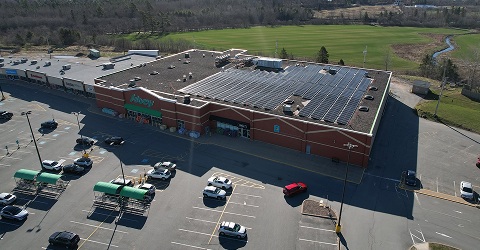
Highlights
Driving Climate Action through in-Store Renovations
A year after completing numerous renovations at the Aberdeen Mall Sobeys in New Glasgow, Nova Scotia, the store’s energy demand per square foot on an annual basis has dropped from approximately 46kWh/ft² to 42kWh/ft², marking another step forward in reducing our environmental footprint through targeted, energy-smart renovations.
We continue to roll out upgrades to stores across Canada. Sobeys’ newly renovated Columbia location in Waterloo, Ontario showcases our commitment to climate action. The upgrades include a new CO₂-based refrigeration system that significantly reduces emissions, high-efficiency LED lighting to lower energy use and maintenance needs, and upgraded HVAC motors and rooftop unit controllers, including AI-driven energy management tools to cut overall energy demand. We expect to see similar reductions in energy use as with the Aberdeen location.
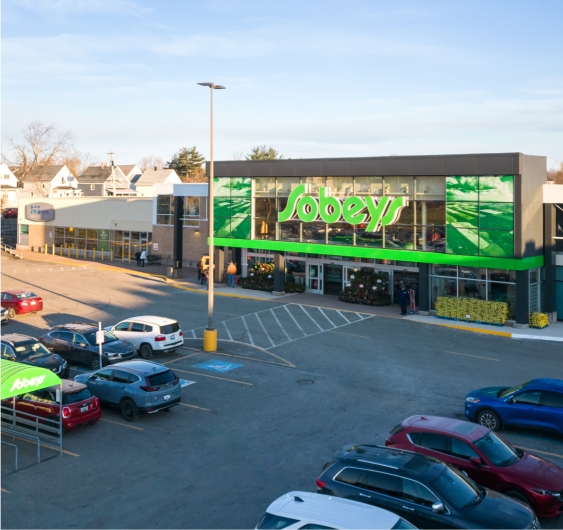

EV Charging Expansion
We’re driving toward a more sustainable future with expanded EV charging access. In Quebec, with support from Fonds Éco IGA, six more IGA stores now offer on-site EV charging, bringing the total to 115 active ports. Longo’s also launched a high-speed charging facility in North Oakville with seven Level 3 fast chargers and a 600-kilowatt hour battery system. Meanwhile, at our corporate offices, we are installing more chargers to support EV-driving teammates.
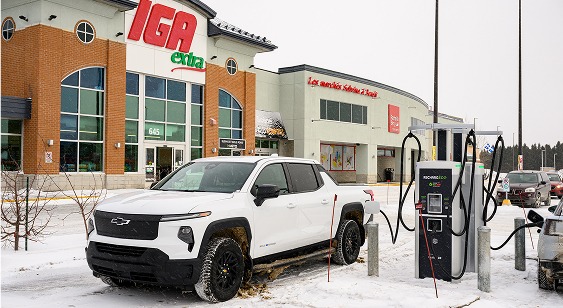
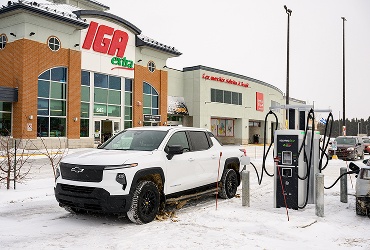
Customer-Facing Signage
Many of the carbon abatement projects we complete in stores take place behind the scenes. To ensure teammates and customers are informed and engaged in our sustainability efforts, we rolled out signage in more than 170 stores across Canada to communicate our environmental impact in those locations.
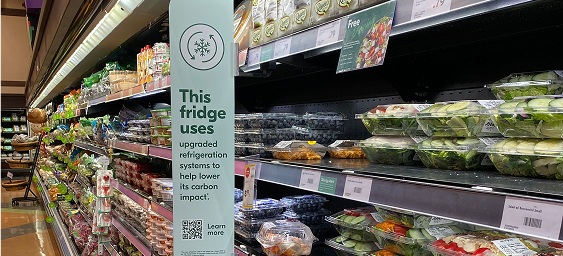
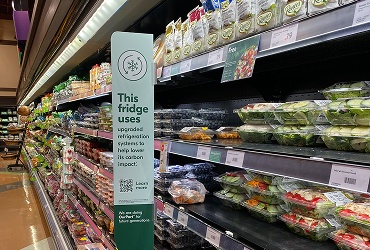
Strategic Partnerships
We’re participating in a Strategic Energy Management pilot program with New Brunswick Power, which includes a complimentary high-level energy audit, to uncover no- or low-cost energy-saving opportunities.
By building stronger relationships with utility conservation teams, we’re identifying more incentive opportunities and complimentary services to optimize electricity use across our accounts. We see the potential to use similar approaches to reduce natural gas use in the future.
In Ontario, some of our stores have enrolled in a three-year performance-based energy savings initiative. Incentives are earned for electricity reductions achieved through operational improvements or capital upgrades. With some participating locations already seeing reductions, we’re engaging facility teams directly to analyze trends and develop custom plans to boost efficiency across multiple sites.
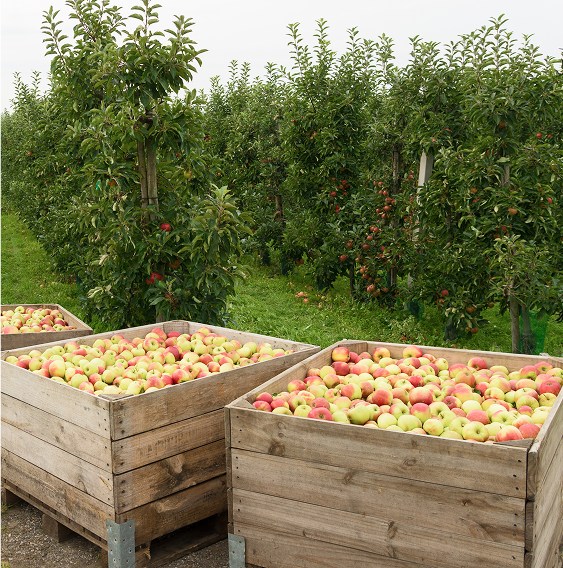
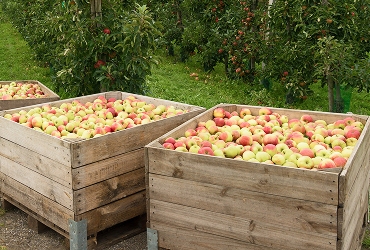
Supplier Climate Engagement
In 2025, our teams hosted supplier discussions to understand the barriers to establishing climate initiatives and targets. We focused on suppliers in high-emitting categories with large spend volumes and will continue these conversations to support our partners on their climate journeys. We are in the process of co-developing a targeted climate action toolkit with local Canadian suppliers that are passionate about addressing climate change but have different capabilities to act. Through several supplier roundtables with partners across commodities and provinces, we gathered input to build a resource centre to provide practical support for local businesses.
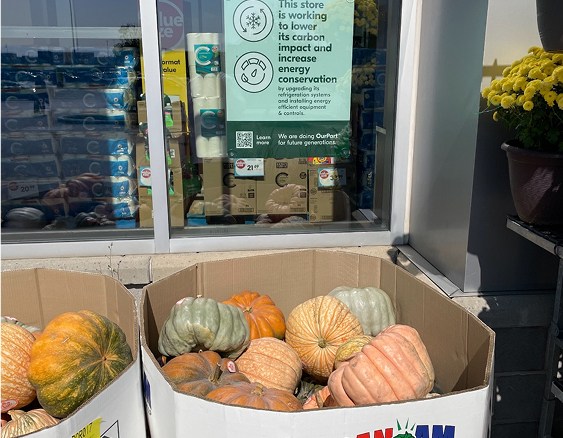
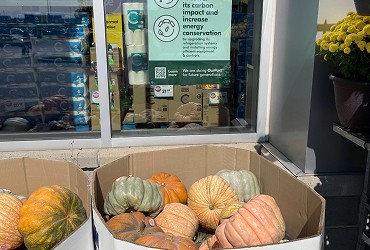
Champions
We are very proud of the commitment Sobeys has made to sustainability in the communities we serve. We hope the progress we have made towards reducing our carbon emissions confirms our determination to reducing our impact on the planet.”
Andrew Dickson, Director, Estimating and Analytics, Real Estate, Sobeys Inc.



Learn More
Our work to tackle climate change includes our focus on environmental management and ethical and sustainable sourcing.
As a family nurturing families, we want to ensure Canadians are taken care of today, tomorrow and in the future. By doing OurPartTM for the environment, we hope to inspire our customers to do theirs. Every step we take together—big or small—can make a difference.
Learn More
